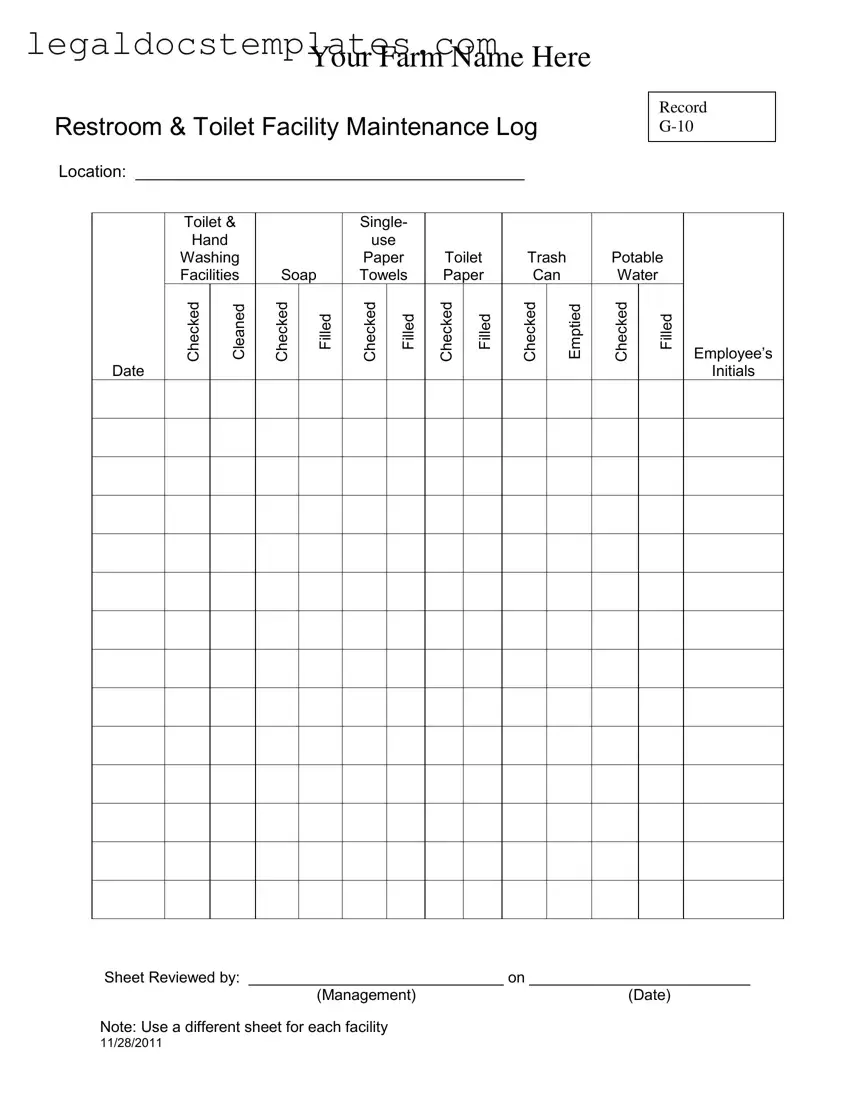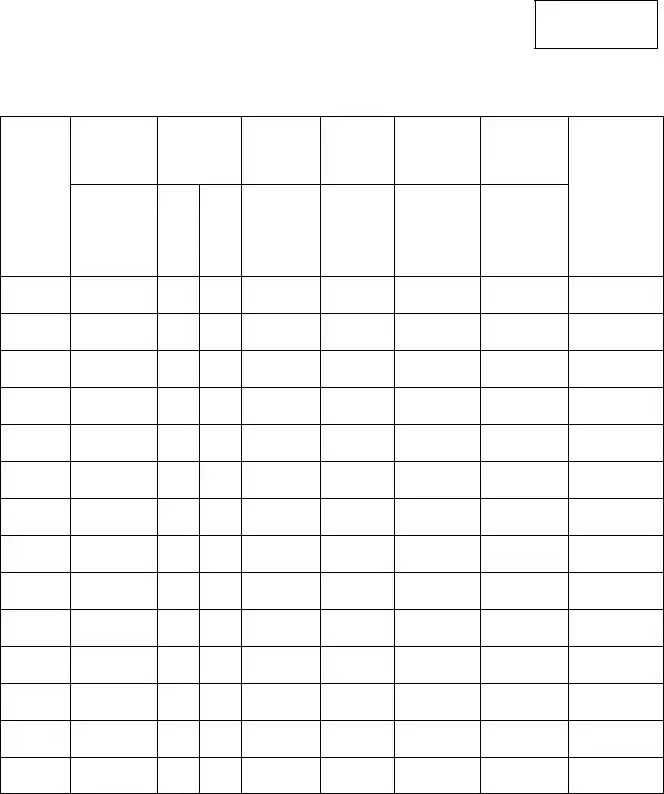What is a Bathroom Cleaning Log Sheet?
A Bathroom Cleaning Log Sheet is a document used to record the maintenance activities for restroom and toilet facilities. This includes checking and cleaning toilets, hand washing facilities, refilling soap, single-use paper towels, toilet paper, emptying trash cans, and ensuring there is an adequate supply of potable water. It also involves recording the employee's initials who performed the tasks and management review details.
Why is it important to maintain a Bathroom Cleaning Log Sheet?
Maintaining a Bathroom Cleaning Log Sheet is crucial for several reasons. It helps in ensuring the cleanliness and hygiene of restroom facilities, which is important for the health and safety of individuals using these spaces. It also aids in the compliance with health and safety regulations. The log provides a record of maintenance, which can be important in the event of a health inspection. Additionally, it assists in managing supplies and prevents shortages.
What should be included in each entry of the Bathroom Cleaning Log Sheet?
Each entry in the Bathroom Cleaning Log Sheet should include:
-
The date of the maintenance activity.
-
Checks and cleaning activities for toilets and hand washing facilities.
-
Soap: Verification and refill status.
-
Single-use paper towels: Verification and refill status.
-
Toilet paper: Verification and refill status.
-
Trash can: Verification and emptied status.
-
Potable water: Verification and refill status.
-
Employee’s initials who conducted the maintenance.
Who should fill out the Bathroom Cleaning Log Sheet?
Employees who are assigned to clean and maintain the restroom and toilet facilities should fill out the Bathroom Cleaning Log Sheet. It is their responsibility to record their activities and verify that all tasks have been completed according to the maintenance schedule.
How often should the Bathroom Cleaning Log Sheet be completed?
The frequency of completing the Bathroom Cleaning Log Sheet depends on the usage level of the restroom and toilet facilities and the specific policies of the establishment. However, it is generally recommended to check and update the log at least once a day to ensure a consistent maintenance schedule.
What should be done if supplies are running low?
If an employee notices that supplies are running low while completing the Bathroom Cleaning Log Sheet, they should report this to their supervisor or management immediately. This ensures that supplies can be replenished before they run out, maintaining the cleanliness and functionality of the facilities.
How should the completed Bathroom Cleaning Log Sheets be stored?
Completed Bathroom Cleaning Log Sheets should be stored securely in a location accessible to management and staff responsible for maintenance oversight. Ideally, these records should be kept for a period of at least one year to provide a historical record of maintenance activities and compliance with health regulations.
Can the Bathroom Cleaning Log Sheet be customized for specific facility needs?
Yes, the Bathroom Cleaning Log Sheet can and should be customized to meet the specific needs and requirements of the facility. While the template provides a comprehensive list of common maintenance tasks, establishments may add additional tasks or details specific to their facilities.
Who reviews the completed Bathroom Cleaning Log Sheets and how often?
Management should review the completed Bathroom Cleaning Log Sheets regularly to ensure that restroom and toilet facilities are being properly maintained. The frequency of review can vary, but it is typically done on a weekly or monthly basis. This review process is crucial for identifying any issues with the maintenance routine and ensuring that all tasks are being performed as required.

